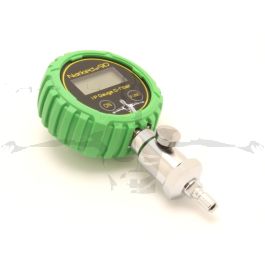Ultrasound cleaning is only required when preparing a reg for service with 100% pure oxygen.Out of curiosity, do you think there exists a practical way for one to test the IP and cracking effort at home?
I took a service technician course earlier last year. I'm currently living somewhere where regulator service of my reg is not really accessible (the price of shipping and servicing is enough to buy a new set and time length in months) so really wish to do the servicing myself if I can. I've found some deals of "personal-level" reg service workbench that seems to feature both an IP gauge and a CP gauge and whose price is within reasonable range. I'm not sure if a ultrasonic cleanser from Amazon will be sufficient to clean the regulator components. I shall be able to acquire appropriate lubricants and replacement parts from nearby dive shops or online. It is just the IP and cracking effort measurement that I haven't figured out a way of doing.
Or alternatively I wonder if a dive shop would allow me to use their workbench at a reasonable rate, if I show my certificate and sign a liability release that I take full responsibility for my reg after the service?
For normal usage (Nitrox up to 40%) just use water with a good descaling detergent (WC net).
Rinse well and dry...
Cracking effort can be measured just with a bucket of water: submerge the reg with diaphragm horizontal, down, until it hisses, and record the depth of the diaphragm.
Measuring IP requires a 10-bars pressure gauge.
The most practical ones have a quick release connector compatible with the hose of your BCD. They cost a few bucks online.
Dive Rite Intermediate Pressure Gauge - Dive Gear Repair & Tools - Scubatoys.com
Dive Rite Intermediate Pressure Gauge, RG1269
www.scubatoys.com





